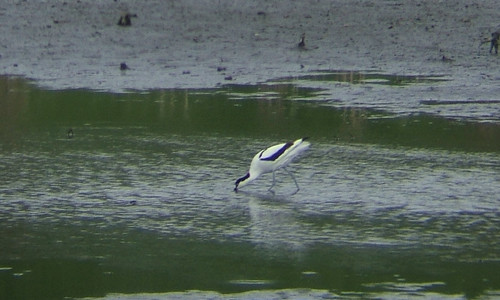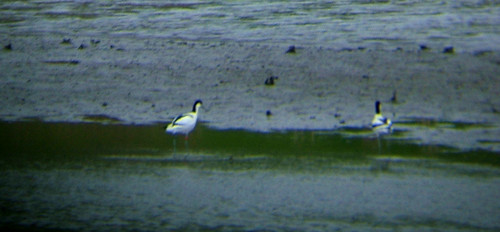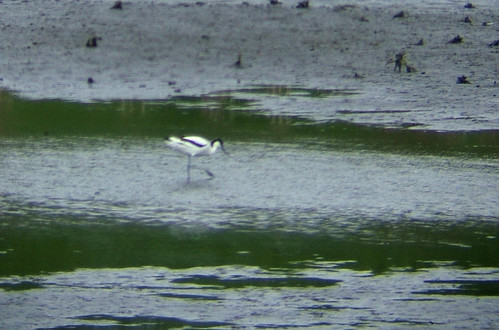
With their place as a symbol of renewal, hope and conservation established the avocets have set about consolidating. 59 years later they still breed at minsmere and now many other lagoon reserves. Last year a pair nested at the RSPB's new reserve, Rainham Marshes in East London. This year at London Wetland Centre a pair seem to have stayed on (they often pass through) and has apparently been seen mating.

I took these pictures at a huge distance through my 8X monocular (I'm working on a way to take pictures through my new 25X spotting scope (thank you ebay!)) so they are not the best but it was a pleasure to see these beautiful birds working the water with their strange upcurved bills.

I'll be going back in a couple of weeks so I'm keeping my fingers crossed they'll still be there when I go back. On a related note Pam tagged me with John at DC Birding Blog's most beautiful birds meme. The American avocet has already been featuring heavily and I'm sure our version will feature in my 10....now to narrow down the other 9.
1 comment:
What an amazingly beautiful bird in a lovely setting. I looked up the RSPB web site and found that this is a Pied Avocet. Some photos on Google show large flocks of them almost dancing on the surface of the water. And they appear to be spectacular in flight, too. How fortunate you are to be able to observe and photograph them so well. I can see why they would be at the top of your list.
Post a Comment